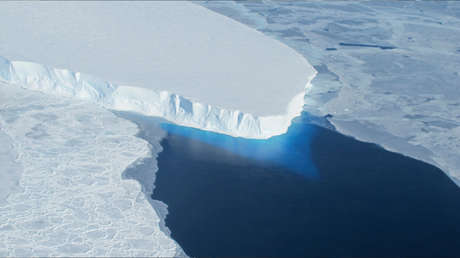Published:
20 dic 2021 23:22 GMT
Researchers also say that cats need to be included in any precautionary measures against the virus.
They hide under the hospitable appearance of the ice of Antarctica Lots of life forms, Verified by a panel of international scientists, they published their results in the current issue of the journal Biology this Monday. Study.
Samples were collected in 2018 by researchers at the Alfred Wegener Institute (Bremerhaven, Germany) who used hot water to drill almost two holes. 200 meters Each of the Extrom ice shelves in the Southeast Sea.
As soon as they reached the seas, the team discovered an unexpected set 77 animal species, Including Saber-shaped cryozoans Como Melicerita obliqua y Surfolite worms As paralaeospira sicula.

Despite being several kilometers away from the open sea with high light and food sources, the findings are very interesting due to the rich biodiversity of the creatures.
Although previous voyages have found some small predators and scavengers such as fish, worms, jellyfish or grilles under the ‘continental’ ice, creatures such as prosovans or cerpolite worms have never been found in such hostile habitats.
“The discovery of so many lives in these extreme conditions This is a complete surprise And reminds us of how unique and special Antarctic marine life is “, He pointed out David Barnes, marine biologist and principal author of the British Antarctic Survey. As he explains, most of these animals eat microalgae (phytoplankton), but since no plant or algae can survive in this environment, the “big question” How do these animals survive and breed here?“
The researchers suggest that there should be a complete network of algae Carried by ocean currents Under the ice shelf. This theory would be most likely to explain the fact that the microscopy carried out by the team shows that the annual growth of four species is comparable to that of similar animals in the open sea Antarctic habitat.
Symbols of the distant past
“Another surprise is how long it has lived here. The carbon dating of the dead pieces of these animals is different. From today until 5,800 years ago“Says Gerhard Kun, co-author of the study.” Despite living 3-9 kilometers away from the nearby open water, an oasis under the ice shelf may have continued for nearly 6,000 years, ”he speculates.
The group warns that climate change and melting snow are rapidly reducing the time available to study and preserve these ecosystems.





:quality(85)/cloudfront-us-east-1.images.arcpublishing.com/infobae/KTKFKR763RBZ5BDQZJ36S5QUHM.jpg)